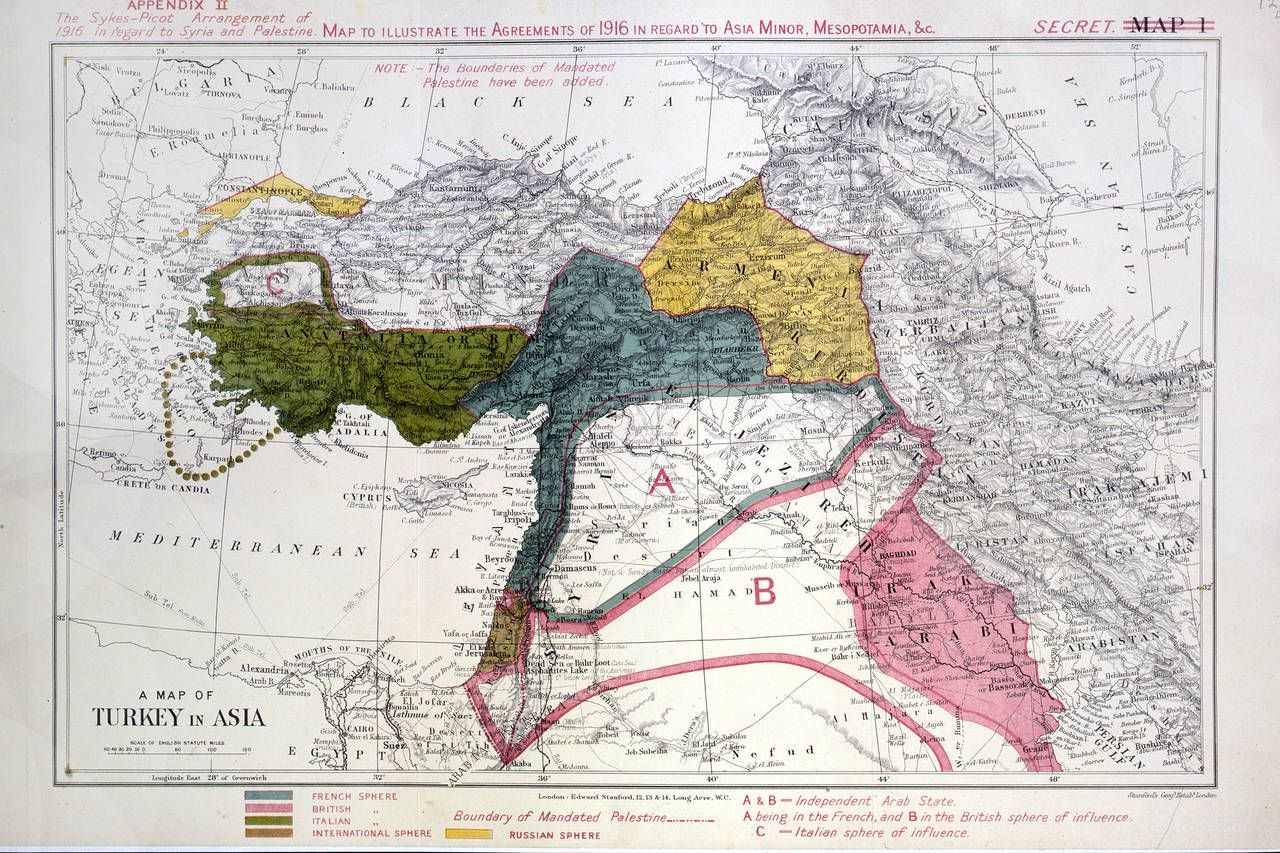Ankara setzt Diplomatie ein, um die Blockade des Gazastreifens zu durchbrechen, kann aber zu anderen Mitteln greifen, wenn diese Methoden nicht funktionieren.
Der türkische Außenminister Hakan Fidan
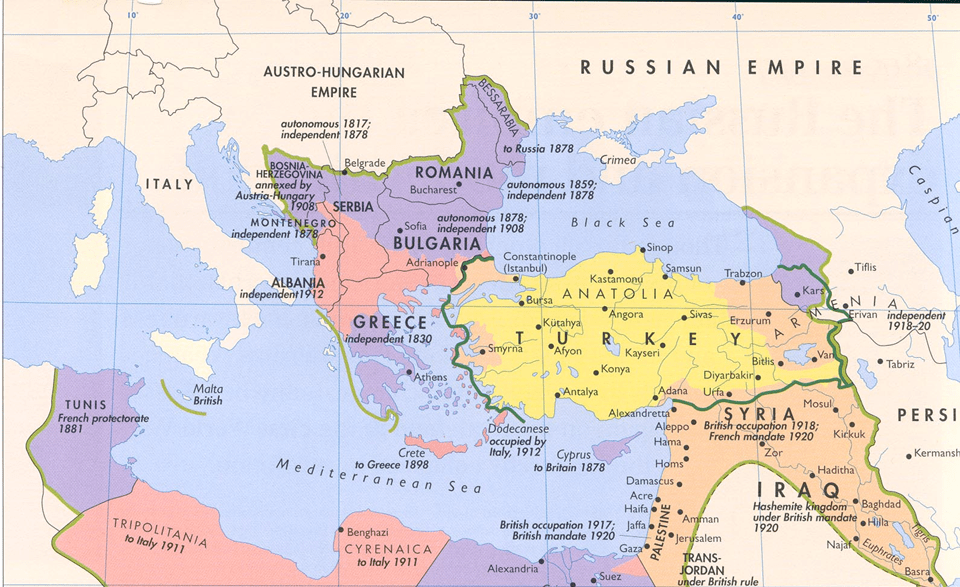
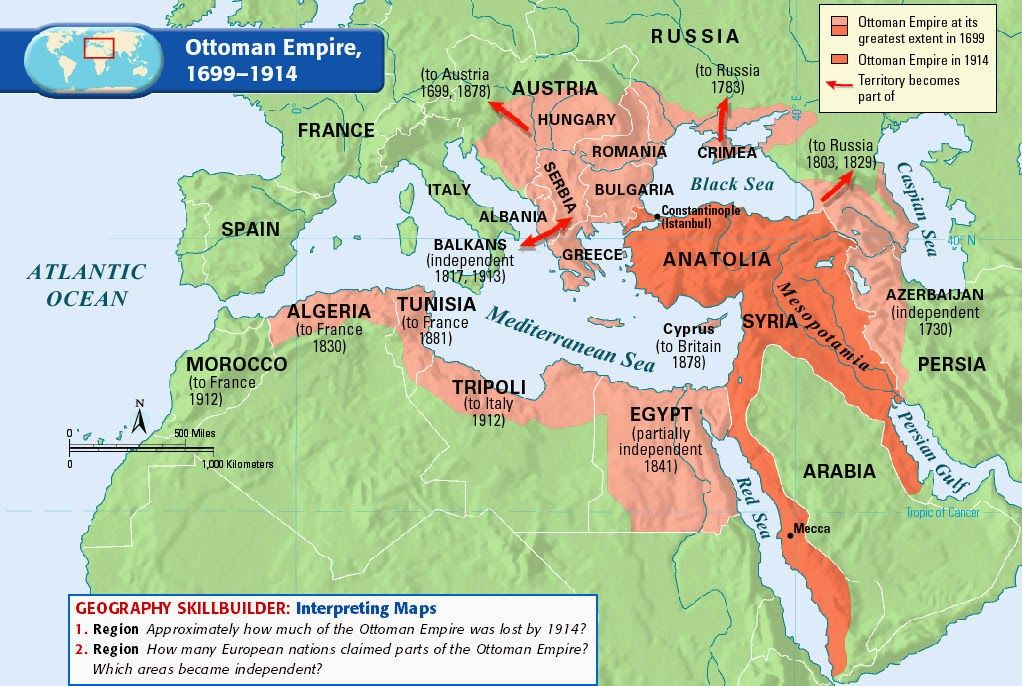
Die Türkei als Rechts- Nachfolger, und (partieller) Territorial- Souverän der Ottoman- Empire- Gebiete
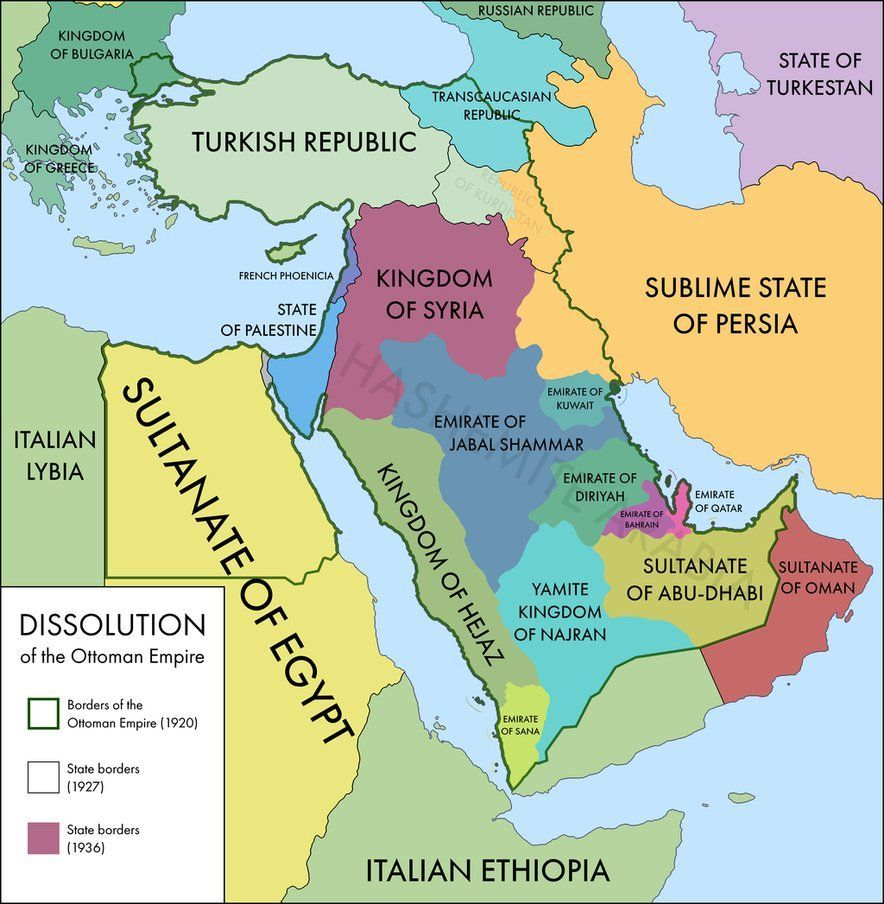
Es tat sich viel, damals im 1. Weltkrieg, nicht nur in Deutschland und Österreich Ungarn, sondern auch in Bezug auf das Ottoman-Empire.
Basis von allem bildete die McMahon-Hussein-Korrespondenz:
The „McMahon-Husain Correspondence“, which took place in 1915 and 1916 between Sir Henry McMahon, at that time His Majesty’s High Commissioner in Cairo, and the Sharif of Mecca, afterwards King Husain of the Hejaz
https://www.un.org/unispal/document/auto-insert-199699/
Ein „Resultat“ der Korrespondenz war das (damals streng geheime) Sykes-Picot-Agreement, vom 16. Mai 1916), nachdem große Teile des Ottoman-Empire neu verteilt wurden (auch Russland – in 1916 noch Teil der Anti-Mittelmächte-Kriegs-Koalition / Russland hatte dann in 1917 zwei Revolutionen – Februar und Oktober – und alles änderte sich).
https://avalon.law.yale.edu/20th_century/sykes.asp
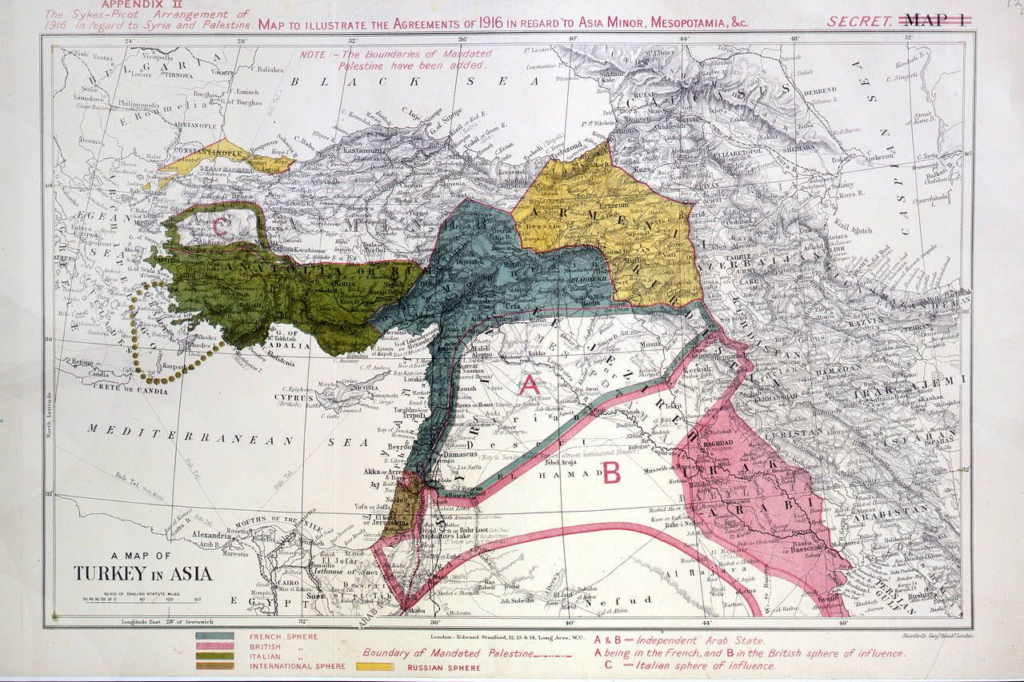
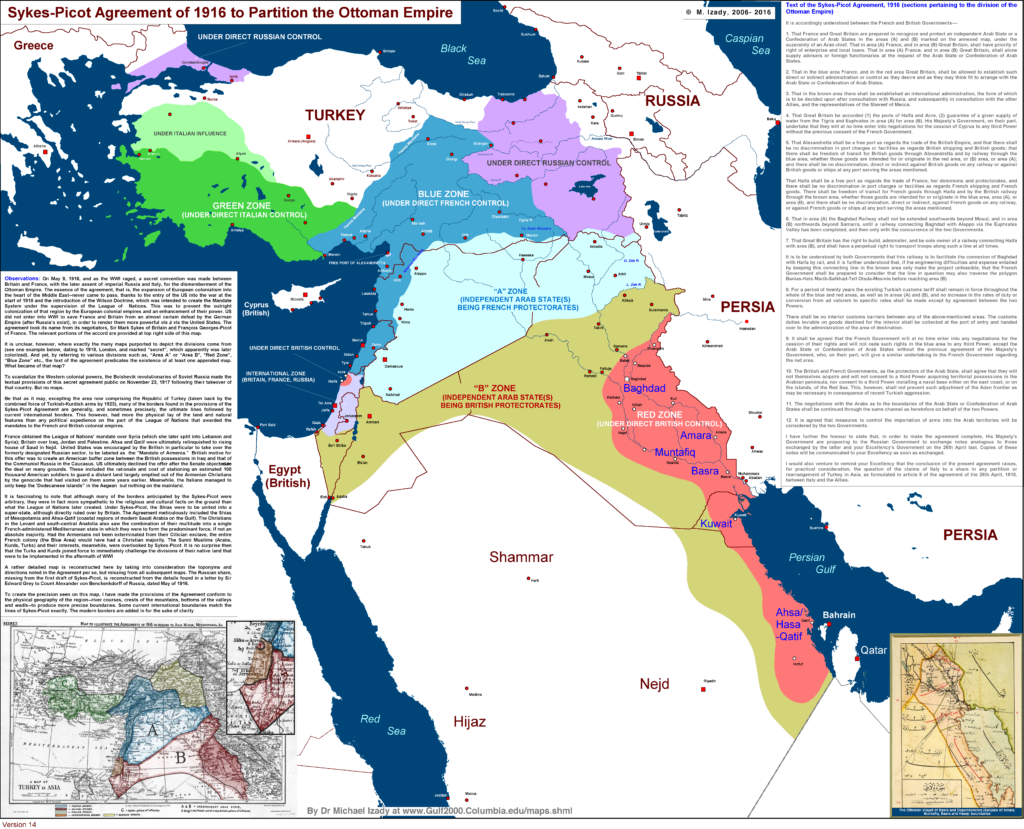
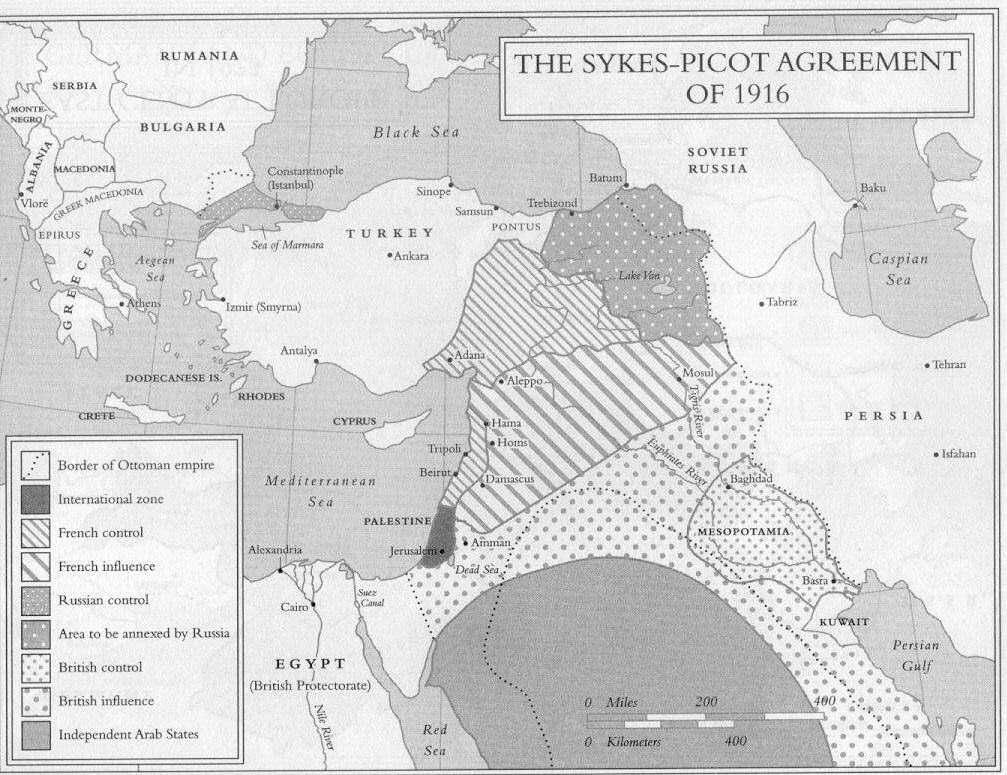
| Annex A: „Memorandum on British Pledges to the Arabs“ (handed in by the Arab representatives at the first meeting on February 23rd) | |
| Annex B: „The McMahon-Husain Correspondence“ (handed in by the United Kingdom representatives at the second meeting on February 24th) | |
| Annex C: „Statement by Sir Michael McDonnell on certain legal points arising out of the Lord Chancellor’s statement at the Second Meeting of the Committee on February 24th“ (handed in by the Arab representatives at the third meeting on February 28th) | |
| Annex D: „Observations arising out of the Lord Chancellor’s statement on the 24th February, 1939“ (handed in by the Arab representatives at the third meeting on February 28th) | |
| Annex E: „Statement by the Lord Chancellor“ (handed in by the United Kingdom representatives at the fourth meeting on March 16th) | |
| Annex F: The Hogarth Message of January, 1918 | |
| Annex G: The Declaration to the Seven of June, 1918 | |
| Annex H: Sir Edmund Allenby’s assurance to the Amir Faisal of October, 1918 | |
| Annex I: The Anglo-French Declaration of November 9th, 1918 | |
| Annex J: Extract from the Report of a Committee presided over by Sir Maurice de Bunsen, June 1915 |
Ergänzend zu obigen Dokumenten wurde auch noch das Faisal- Weizmann- Agreement, britisch organisiert, am 3. Jänner 1919 unterzeichnet.
https://www.un.org/unispal/document/auto-insert-207006/
+++ +++
Am 10. Jänner 1920 war die „Leage of Nations“ (zu deutsch „Völkerbund“ genannt) gegründet worden, die große Teile des Ottoman- Empire, im Rahmen von Mandaten (League of Nations mandate) an die Siegermächte verteilt hatte (OHNE Zustimmung der Ottoman- Empire).
Die Sieg- Alliierten, hier vor allem Briten und Franzosen, hatten dann weitergehend in 1919 schon unfangreiche Maßnahmen gesetzt (siehe auch Faisal-Weizmann-Agreement), die man dann von Seiten des Ottoman- Sultans absegnen ließ.
Zuerst gab es die „San Remo Conference“ vom 19. bis 26. April 1920, die den Vertragstext mit dem Osmanischen Reich vorbereitete (in dem Vertrag sollte der Sultan alles anerkennen, was 1919 schon alles gemacht wurde – von den Sieges- Alliierten direkt, oder über den Völkerbund umgesetzt), und dann den „Treaty of Sevres„, der am 10. August 1920 von den Beauftragten des Ottoman- Sultans unterschrieben wurde (und damit alles anerkannte, was die Alliierten denn so gemacht hatten – und einiges mehr, wie die Abtretung von Gebieten, die dann als Kolonial- Gebiete an Briten und Franzosen fielen, etc.).
http://www.hri.org/docs/sevres/
https://treaties.fcdo.gov.uk/awweb/pdfopener?md=1&did=63986
Damit war für die Sieg- Alliierten dann eigentlich alles in Ordnung. Meinte man.
+++ +++ +++
Aufstand der Jungtürken – ATATÜRK- Faktor
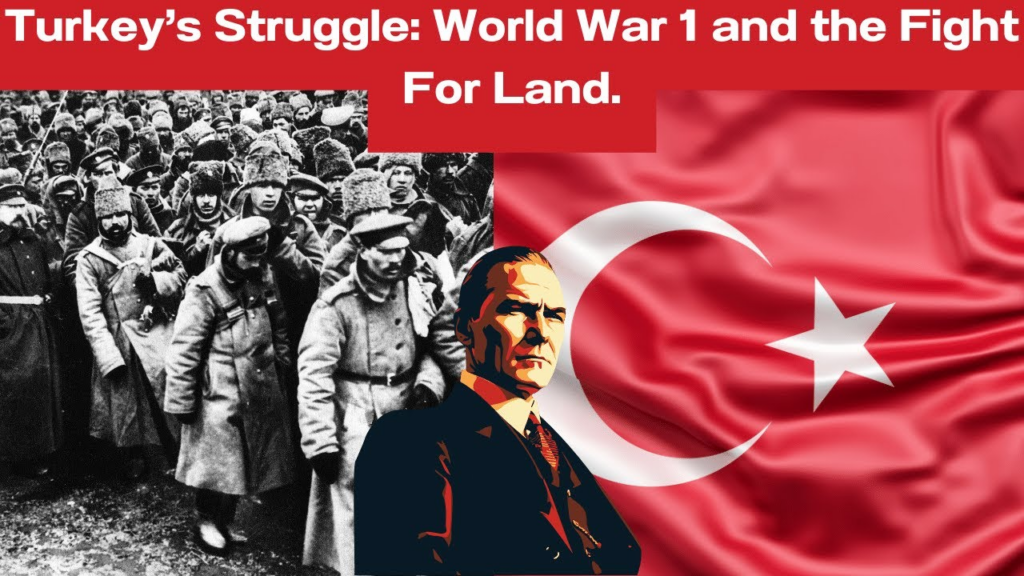
Diese Bedingungen führten zum Aufstand der Jung- Türken, die den Sultan absetzten, und den bewaffeneten Kampf gegen die Vertragsmächte des Treaty of Sevres aufnahmen.
Zuerst gab es den Kampf, den die Alliierten aufnahmen, nach einigen Niederlagen aber, schwenkte man auf eine Verhandlungslösung mit den Jungtürken ein, was dann zum „Treaty of Lausanne“ führte, der den Treaty of Sevres für ungültig erklärte, weil er eben durch den Lausanne-Vertrag ersetzt wurde.
+++ +++ +++
Rechtsnachfolger des Ottoman-Empire= Türkei:
Der Vertrag von Lausanne – Auszug:
THE BRITISH EMPIRE, FRANCE, ITALY, JAPAN, GREECE, ROUMANIA and the SERB-CROAT-SLOVENE STATE, of the one part,
and TURKEY, of the other part;
Being united in the desire to bring to a final close the state of war which has existed in the East since 1914,
Being anxious to re-establish the relations of friendship and commerce which are essential to the mutual well-being of their respective peoples,
And considering that these relations must be based on respect for the independence and sovereignty of States,
Have decided to conclude a Treaty for this purpose, and have appointed as their Plenipotentiaries:
Y
Damit wird die Türkei umfassend als Rechtsnachfolger des Ottoman-Empire anerkannt, denn der Krieg auf den sich der Text bezieht, wurde mit dem Ottoman Empire geführt.
+++ +++ +++
Treaty of Lausanne: Genaue Aufteilung, aber nicht im Rahmen des Sykes-Picot-Agreement-Gebietes
Der Treaty of Lausanne besteht im Grunde aus zwei geographischen Ordnungs- Zonen:
+> Ordnungszone genau: Im Rahmen dieser Zone wird exakt und sehr genau festgelegt, wie die Ex- Ottoman- Gebiete geregelt sind, was die Türkei hier genau abtritt (z. B. Zypern), und welche Grenzen es genau anerkennt, und welche Gebiete es genau abtritt.
Hier ist alles ein-eindeutig, und die Türkei, als Rechtsnachfolger des Ottoman-Empire, an exakt definierte Fixierungen gebunden.
X
+> Ordnungszone Sykes-Picot-Agreement: Eigentlich war durch den Vertrag von Sevres schon alles klar geregelt, doch genau dieser Vertrag musste anulliert werden, und so musste im Rahmen des Lausanne- Vertrages, eine gewisse „Grauzone“ eingeführt werden (wobei, für die Zone ist eigentlich alles klar – nur sie wirkt etwas unklar/grau.
Y
Im Rahmen von Sykes-Picot hatte man die Region schon aufgeteilt, sich auch Mandate vom Völkerbund geben lassen, was aber die Jungtürken nicht akzeptieren wollten (wie könnt ihr Land verteilen, das Euch nicht gehört – so die türkische Begründung – gemeint Briten und Franzosen im Rahmen von Sykes-Picot und gemeint auch die Völkerbund- Beschlüsse).
Y
Briten und Franzosen hatten aber bereits Fakten in der Region geschaffen, konnten nicht mehr zurück, mussten aber irgendwie mit den Jung-Türken zur Einigung kommen.
+++ +++ +++
Treaty of Lausanne – und Sykes-Picot-Agreement-Gebiet:
Der am 24. Juli 1923 unterzeichnete „Treaty of Lausanne„:
https://jusmundi.com/en/document/treaty/en-treaty-of-peace-treaty-of-lausanne-1923-treaty-of-peace-treaty-of-lausanne-tuesday-24th-july-1923
Die Vertragspartner:
THE BRITISH EMPIRE, FRANCE, ITALY, JAPAN, GREECE, ROUMANIA and the SERB-CROAT-SLOVENE STATE, of the one part,
and TURKEY, of the other part;
Man beachte, dass die USA kein Vertragspartner sind, und auch gewisse Vertragspartner, die noch beim Treaty von Severs dabei waren, nicht mehr dabei sind:
THE HEDJAZ, ARMENIA, BELGIUM, POLAND, PORTUGAL, and CZECHO-SLOVAKIA.
Besonders interessant – nicht mehr dabei = The Hedjaz= The Hashemite Kingdom of Hejaz (Arabic: المملكة الحجازية الهاشمية, Al-Mamlakah al-Ḥijāziyyah Al-Hāshimiyyah) was a state in the Hejaz region of the Western Asia that included the western portion of the Arabian Peninsula that was ruled by the Hashemite dynasty. It was self-proclaimed as a kingdom in June 1916 during the First World War, to be independent from the Ottoman Empire, on the basis of an alliance with the British Empire to drive the Ottoman Army from the Arabian Peninsula during the Arab Revolt.
+++ +++ +++
ARTICLE 3.
From the Mediterranean to the frontier of Persia, the frontier of Turkey is laid down as follows:
- With Syria:
The frontier described in Article 8 of the Franco-Turkish Agreement of the 20th October, 1921 - With Iraq:
The frontier between Turkey and Iraq shall be laid down in friendly arrangement to be concluded between Turkey and Great Britain within nine months.
In the event of no agreement being reached between the two Governments within the time mentioned, the dispute shall be referred to the Council of the League of Nations.
The Turkish and British Governments reciprocally undertake that, pending the decision to be reached on the subject of the frontier, no military or other movement shall take place which might modify in any way the present state of the territories of which the final fate will depend upon that decision.
Man beachte, dass der Vertrag kaum Grenzen festlegt, und man beachte diesen beiden Vertrags- Artikel:
ARTICLE 16.
Turkey hereby renounces all rights and title whatsoever over or respecting the territories situated outside the frontiers laid down in the present Treaty and the islands other than those over which her sovereignty is recognised by the said Treaty, the future of these territories and islands being settled or to be settled by the parties concerned.
The provisions of the present Article do not prejudice any special arrangements arising from neighbourly relations which have been or may be concluded between Turkey and any limitrophe countries.
Y
Man beachte „or respecting the territories“ für die nicht im Vertrag definierten Länder bzw. deren Grenzen. Für Faisal-Weizmann-Agreement gilt „respecting“ – sic!
Für Arabien wurde mehr oder weniger nichts geregelt (also im groben für jenes Gebiet, das bereits mit Sykes-Picot-Agreement aufgeteilt wurde).
ARTICLE 27.
No power or jurisdiction in political, legislative or administrative matters shall be exercised outside Turkish territory by the Turkish Government or authorities, for any reason whatsoever, over the nationals of a territory placed under the sovereignty or protectorate of the other Powers signatory of the present Treaty, or over the nationals of a territory detached from Turkey.
It is understood that the spiritual attributions of the Moslem religious authorities are in no way infringed.
Y
Die Sieg-Alliierten wollten weder die bereits gemachten Fixierungen rückgängig machen (wie Faisal-Weizmann-Agreement), noch auf bereits installierte Kolonial- Gebiete verzichten, und die Jung- Türken wollten nicht auf das dabei genutzte Territorium des Osmanischen Reiches verzichten.
Y
So fand man eine „duale“ Lösung:
Das Territorium das im Vertrag von Lausanne nicht explizit benannt und definiert wurde, blieb Ottoman bzw. in Ottoman- Rechtsnachfolge türkisch, und zwar im Rahmen der Territorial Sovereignty, ABER, den Türken wurde der Zugriff auf die Bewohner dieser Territorien, also die Staats- Zustände dieser Territorien, verwehrt.
Y
So ist das Faisal-Weizmann-Agreement-Territory unter türkischer (weil Ottoman-Rechtsnachfolge) Territorial Sovereignty, auf die daraus lebenden Bewohner, hat die Türkei aber keinen Zugriff.
+++ +++
ARTICLE 28.
Each of the High Contracting Parties hereby accepts, insofar as it is concerned, the complete abolition of the Capitulations in Turkey in every respect.
+++ +++ +++
Wobei, die Türkei schützt ihre Bürger – ob aktuelle oder vorherige – man beachte das Beispiel Cypern (Vorlage für eine Gaza- Intervention?):
ARTICLE 20.
Turkey hereby recognises the annexation of Cyprus proclaimed by the British Government on the sth November, 1914.
ARTICLE 21.
Turkish nationals ordinarily resident in Cyprus on the 5th November, 1914, will acquire British nationality subject to the conditions laid down in the local law, and will thereupon lose their Turkish nationality. They will, however, have the right to opt for Turkish nationality within two years from the coming into force of the present Treaty, provided that they leave Cyprus within twelve months after having so opted.
Turkish nationals ordinarily resident in Cyprus on the coming into force of the present Treaty who, at that date, have acquired or are in process of acquiring British nationality in consequence of a request made in accordance with the local law, will also thereupon lose their Turkish nationality.
It is understood that the Government of Cyprus will be entitled to refuse British nationality to inhabitants of the island who, being Turkish nationals, had formerly acquired another nationality without the consent of the Turkish Government.
Y
Türkische Invasion von Zypern, am 20. Juli 1974, und die Errichtung von Türkisch-Nord-Zypern.
+++ +++ +++
+++ +++ +++
Die Grenzen in Europa und zu Europa musste die Türkei sehr genau anerkennen, wie auch manche arabischen Grenzen (außerhalb des Sykes-Picot-Gebietes):
ARTICLE 17.
The renunciation by Turkey of all rights and titles over Egypt and over the Soudan will take effect as from the 5th November, 1914.
ARTICLE 18.
Turkey is released from all undertakings and obligations in regard to the Ottoman loans guaranteed on the Egyptian tribute, that is to say, the loans of 1855, 1891 and 1894. The annual payments made by Egypt for the service of these loans now forming part of the service of the Egyptian Public Debt, Egypt is freed from all other obligations relating to the Ottoman Public Debt.
ARTICLE 19.
Any questions arising from the recognition of the State of Egypt shall be settled by agreements to be negotiated subsequently in a manner to be determined later between the Powers concerned. The provisions of the present Treaty relating to territories detached from Turkey under the said Treaty will not apply to Egypt.
+++ +++
ARTICLE 22.
Without prejudice to the general stipulations of Article 27, Turkey hereby recognises the definite abolition of all rights and privileges whatsoever which she enjoyed in Libya under the Treaty of Lausanne of the 18th October, 1912, and the instruments connected therewith.
+++ +++
+++ +++ +++ +++ +++
ARTICLE 2.
From the Black Sea to the Aegean the frontier of Turkey is laid down as follows:
- With Bulgaria:
From the mouth of the River Rezvaya, to the River Maritza, the point of junction of the three frontiers of Turkey, Bulgaria and Greece:
the southern frontier of Bulgaria as at present demarcated;
2.
With Greece:
Thence to the confluence of the Arda and the Marilza:
the course of the Maritza;
then upstream along the Arda, up to a point on that river to be determined on the spot in the immediate neighbourhood of the village of Tchorek-Keuy:
the course of the Arda;
thence in a south-easterly direction up to a point on the Maritza, 1 kilom. below Bosna-Keuy:
a roughly straight line leaving in Turkish territory the village of Bosna-Keuy. The village of Tchorek-Keuy shall be assigned to Greece or to Turkey according as the majority of the population shall be found to be Greek or Turkish by the Commission for which provision is made in Article 5, the population which has migrated into this village after the 11th October, 1922, not being taken into account;
thence to the Aegean Sea:
the course of the Maritza.
ARTICLE 12.
The decision taken on the 13th February, 1914, by the Conference of London, in virtue of Articles 5 of the Treaty of London of the 17th-30th May, 1913, and 15 of the Treaty of Athens of the 1st-14th November, 1913, which decision was communicated to the Greek Government on the 13th February, 1914, regarding the sovereignty of Greece over the islands of the Eastern Mediterranean, other than the islands of Imbros, Tenedos and Rabbit Islands, particularly the islands of Lemnos, Samothrace, Mytilene, Chios, Samos and Nikaria, is confirmed, subject to the provisions of the present Treaty respecting the islands placed under the sovereigntyof Italy which form the subject of Article 15.
Except where a provision to the contrary is contained in the present Treaty, the islands situated at less than three miles from the Asiatic coast remain under Turkish sovereignty.
ARTICLE 13.
With a view to ensuring the maintenance of peace, the Greek Government undertakes to observe the following restrictions in the islands of Mytilene, Chios, Samos and Nikaria:.
- No naval base and no fortification will be established in the said islands.
- Greek military aircraft will be forbidden to fly over the territory of the Anatolian coast. Reciprocally, the Turkish Government will forbid their military aircraft to fly over the said islands.
- The Greek military forces in the said islands will be limited to the normal contingent called up for military service, which can be trained on the spot, as well as to a force of gendarmerie and police in proportion to the force of gendarmerie and police existing in the whole of the Greek territory.
ARTICLE 14.
The islands of Imbros and Tenedos, remaining under Turkish sovereignty, shall enjoy a special administrative organisation composed of local elements and furnishing every guarantee for the native non-Moslem population in so far as concerns local administration and the protection of persons and property. The maintenance of order will be assured therein by a police force recruited from amongst the local population by the local administration above provided for and placed under its orders.
The agreements which have been, or may be, concluded between Greece and Turkey relating to the exchange of the Greek and Turkish populations will not be applied to the inhabitants of the islands of Imbros and Tenedos.
ARTICLE 15.
Turkey renounces in favour of Italy all rights and title over the following islands: Stampalia (Astrapalia), Rhodes (Rhodos), Calki (Kharki), Scarpanto, Casos (Casso), Piscopis (Tilos), Misiros (Nisyros), Calimnos (Kalymnos), Leros, Patmos, Lipsos (Lipso), Simi (Symi), and Cos (Kos), which are now occupied by Italy, and the islets dependent thereon, and also over the island of Castellorizzo.
ARTICLE 25.
Turkey undertakes to recognise the full force of the Treaties of Peace and additional Conventions concluded by the other Contracting Powers with the Powers who fought on the side of Turkey, and to recognise whatever dispositions have been or may be made concerning the territories of the former German Empire, of Austria, of Hungary and of Bulgaria, and to recognise the new States within their frontiers as there laid down.
ARTICLE 26.
Turkey hereby recognises and accepts the frontiers of Germany, Austria, Bulgaria, Greece, Hungary, Poland, Roumania, the Serb-Croat-Slovene State and the Czechoslovak State, as these frontiers have been or may be determined by the Treaties referred to in Article 25 or by any supplementary conventions.
ARTICLE 30.
Turkish subjects habitually resident in territory which in accordance with the provisions of the present Treaty is detached from Turkey will become ipsofacto, in the conditions laid down by the local law, nationals of the State to which such territory is transferred.
+++ +++ +++

